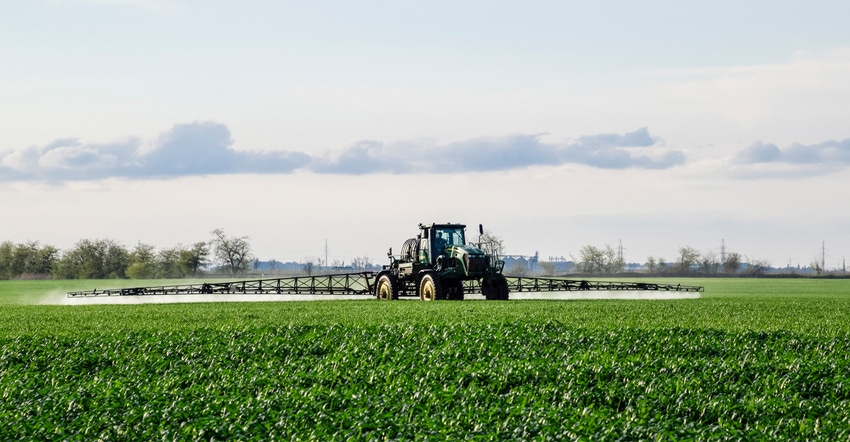October 12, 2021

Dave Franzen, North Dakota State University Extension soil specialist, says due to the increase in natural gas pricing, farmers can expect to see nitrogen fertilizer prices remain high, or even increase, in the next growing season.
“China has supplied about a third of the world’s phosphate, and it has essentially banned exports through 2022,” Franzen says. “That puts the burden of supply on other countries, including the United States.”
According to Franzen, the U.S. is not in a great position for mine and production expansion due to serious environmental concerns. This means that phosphate prices, which are already high, will continue to increase at least through 2022.
Nitrogen needs
Major crops in North Dakota that require higher rates of nitrogen fertilizer are corn, small grains, sunflower and canola. Most dry bean acres and flax require or receive N, but rates are modest compared to the four previously mentioned classes of crops.
To economically survive the higher N costs, Franzen recommends farmers consider implementing one or more of the following strategies:
Soil sampling. Sample soil by zone for residual soil nitrate at a 2-foot depth. Soil nitrate N values are higher this year due to the drought and lower crop yields in 2021. Sampling in zone for accuracy allows farmers to take advantage of N already present in the soil and apply variable-rate N if practical for the 2022 crop. This reduces rates without negative yield or profitability consequences.
Nitrogen calculators. Use these to determine N rates for corn, spring wheat and durum, and sunflowers. As N costs increase and grain prices stay level, profitable N rates decrease. The relationship between N rate and yield in crops is not a straight line. It is a curve with “shoulders” near the peak. NDSU also offers several nitrogen calculator applications.
Fall application. Fall N application is an option for most soils in North Dakota. Sandy soils and those with flooding potential near streams and rivers are not soils fit for fall application. See the NDSU Crop and Pest Report article for details on fall application guidelines.
Phosphate requirements
Major crops in North Dakota that require phosphate are corn, sugarbeet, potato, small grains, canola, soybean and dry bean. Sunflower and flax do not need supplemental P at any soil test value, no matter how low. Of phosphate-requiring crops in a high phosphate price year, all of the P can be supplied by a seed-placed or near-seed-placed starter in sugarbeet, canola, small grains and western North Dakota corn.
“Potato will always need high rates of phosphate,” Franzen says. “Corn always needs starter phosphate, but very low to low soil testing soils should receive supplemental broadcast, deep-banded or air-seeder-banded phosphate in addition. Soybean should not receive seed-placed phosphate due to yield reduction, and dry bean can receive small amounts of seed-placed phosphate or broadcast.”
Franzen recommends the following guidelines for reducing P costs and maximizing P use efficiency for the 2022 crop:
Soil sampling. Although there are no P calculators in North Dakota, NDSU spring wheat and durum research indicates that as P costs rise, the critical value of soil test P that results in profitable P application decreases. For soybean, NDSU Extension recommends a critical value of 6 ppm for a “normal” P cost to soybean price relationship, but in today’s economic conditions, 5 ppm would be a more reasonable critical value.
No fall phosphate applications. Despite many farmers remembering soil loss this past spring and either leaving volunteer cereals to grow, planting a cover crop, or exploring strip-till or no-till, others are leaving their soils black. These fields should not have any fall phosphate. If P is applied to these fields, even if worked into the soil 1 to 2 inches, the chances of it surviving into June at the rates applied are slim due to probable soil loss primarily from wind.
Broadcast rates. Consider applying any broadcast rates of P for corn into soybean or wheat stubble with a drill or air seeder. This will place that phosphate below a depth susceptible to water movement and wind movement during the fall, winter and spring.
Potassium shortages
Potassium fertilizer prices are currently high and may move higher due to the pull from N and P.
“The most important strategy to use for potassium in North Dakota is to follow the NDSU recommendations for potassium for each crop, soil test by zone, and use the North Dakota potassium calculator for corn to avoid any excessive and futile potassium application,” Franzen says.
For sandy soils with low real cation exchange capacity, it is unlikely these will ever test greater than 100 ppm no matter how much K is applied. For these soils in particular, it is important to use only what is required to grow the next crop knowing that the soil test will not “build” with additional K.
Source: North Dakota State University Extension is solely responsible for the information provided and is wholly owned by the source. Informa Business Media and all its subsidiaries are not responsible for any of the content contained in this information asset.
You May Also Like




